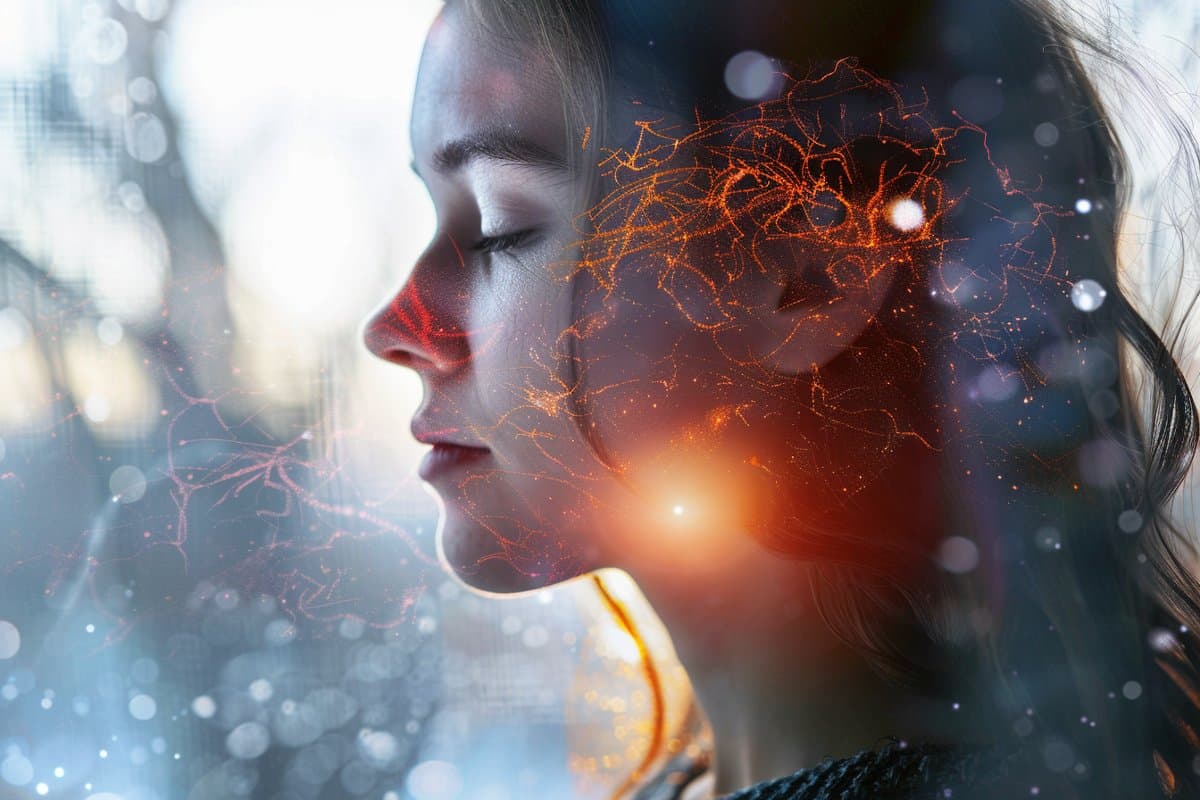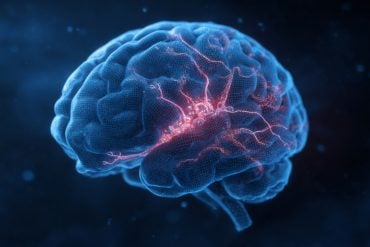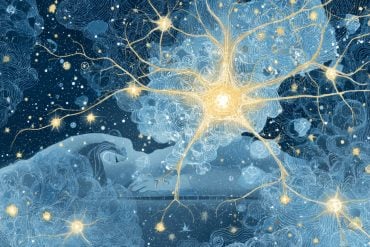Summary: The development of anxiety in girls and young women might be attributed to the imbalance of brain chemicals GABA and glutamate. Researchers found that during maturation, the increase in GABA levels coupled with a decrease in glutamate levels in the dorsolateral prefrontal cortex could be indicators of anxiety levels.
This discovery opens up new avenues for targeted anxiety treatments, focusing on restoring the balance between these two chemicals. By understanding these chemical fluctuations during crucial developmental stages, such as adolescence, this research holds the promise of early detection and intervention for anxiety disorders, particularly in young females.
Key Facts:
- Chemical Imbalance Linked to Anxiety: An imbalance between GABA, a calming neurotransmitter, and glutamate, associated with increased brain activity, has been identified as a crucial factor in the development of anxiety in young women.
- Targeted Treatments on the Horizon: This study suggests that treatments aiming to adjust the levels of GABA and glutamate could offer new, effective ways to combat anxiety in girls and young women.
- Innovative Use of Brain Imaging: Utilizing magnetic resonance spectroscopy, researchers were able to measure the levels of these neurotransmitters, providing insights into the neurochemical underpinnings of anxiety.
Source: University of Surrey
The development of anxiety in girls and young women may stem from an imbalance between two crucial brain chemicals, Gamma-Aminobutyric Acid (GABA) and Glutamate, according to a new study from the University of Surrey. This discovery offers promising insights into potential treatment avenues for girls and women dealing with anxiety.
The study revealed that as young women mature, the levels of GABA (a calming brain chemical) increase, while those of glutamate, known for its role in boosting brain activity, decrease.

Dr Nicola Johnstone, a Research Fellow at the University of Surrey’s School of Psychology and co-author of the study, said:
“Our research indicates that the equilibrium between GABA and glutamate in the dorsolateral prefrontal cortex serves as a vital indicator of anxiety levels. While glutamate propels brain activity, GABA acts as a brake. Our findings suggest that anxiety, often characterised by impaired rational thought, is intricately linked to the overactive braking system in the brain.”
These revelations not only shed light on the underlying mechanisms of anxiety but also pave the way for targeted interventions that address the delicate balance of GABA and glutamate in the brain.
Dr Kathrin Cohen Kadosh, Associate Professor in Developmental Cognitive Neuroscience at the University of Surrey and co-author of the study, said:
“Grasping how key brain chemicals, GABA and glutamate, fluctuate during important growth stages like adolescence is vital for spotting and stopping anxiety disorders early. This study shines a light on the possibility of focusing on these brain chemicals for new treatments, particularly in young women.”
By unravelling the mysteries of brain chemistry, the researchers aim to offer more effective treatments for anxiety, ultimately empowering girls and young women to lead healthier, more fulfilling lives.
The research used 81 participants from two age groups:
- 49 participants aged 10-12 years
- 32 participants aged 18-25 years
The team used a brain imaging technique called magnetic resonance spectroscopy to measure the levels of the brain chemicals in different areas of the brain.
About this anxiety research news
Author: Dalitso Njolinjo
Source: University of Surrey
Contact: Dalitso Njolinjo – University of Surrey
Image: The image is credited to Neuroscience News
Original Research: Open access.
“Excitatory and inhibitory neurochemical markers of anxiety in young females” by Nicola Johnstone et al. Developmental Cognitive Neuroscience
Abstract
Excitatory and inhibitory neurochemical markers of anxiety in young females
Between the ages of 10–25 years the maturing brain is sensitive to a multitude of changes, including neurochemical variations in metabolites. Of the different metabolites, gamma-aminobutyric acid (GABA) has long been linked neurobiologically to anxiety symptomology, which begins to manifest in adolescence.
To prevent persistent anxiety difficulties into adulthood, we need to understand the maturational trajectories of neurochemicals and how these relate to anxiety levels during this sensitive period.
We used magnetic resonance spectroscopy in a sample of younger (aged 10–11) and older (aged 18–25) females to estimate GABA and glutamate levels in brain regions linked to emotion regulation processing, as well as a conceptually distinct control region.
Within the Bayesian framework, we found that GABA increased and glutamate decreased with age, negative associations between anxiety and glutamate and GABA ratios in the dorsolateral prefrontal cortex, and a positive relationship of GABA with anxiety levels.
The results support the neural over-inhibition hypothesis of anxiety based on GABAergic activity.






